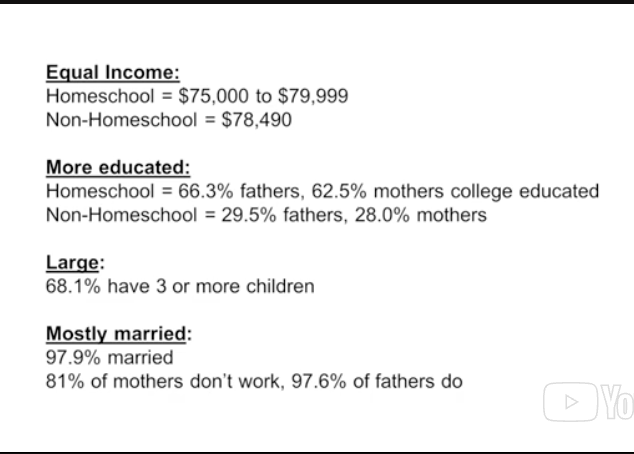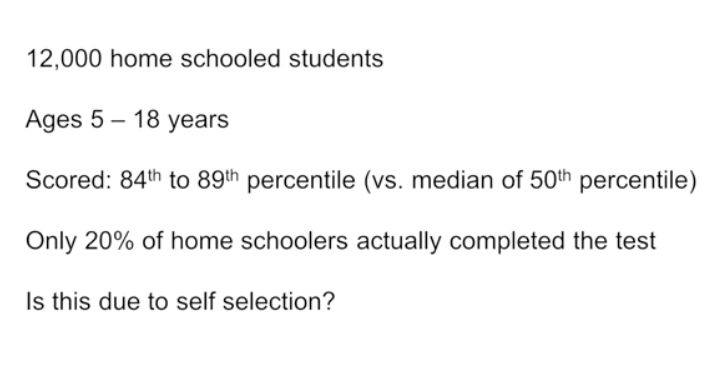PSYC 190 - Acceleration & Homeschooling
1/38
There's no tags or description
Looks like no tags are added yet.
Name | Mastery | Learn | Test | Matching | Spaced |
|---|
No study sessions yet.
39 Terms
(VIDEO 5.63) Academic acceleration vs. gifted & talented education program
the option for acceleration is on component of a broader program for education students with especially high abilities for their age
some acceleration programs focus on supplementing an existing curriculum with advance material
(VIDEO 5.63) Content-based acceleration
supplementing an existing curriculum with advance material (National Work Group)
can often accommodate students who excel more in some areas than others, by enriching only a subset of subjects
ex: AP classes
(VIDEO 5.63) Grade-based acceleration
defined as any acceleration effort that reduces the total amount of time a student spends in K-12 education
ex: early entrance to kindergarten/ first grade, early college acceptable, skipping a grade
(VIDEO 5.63) Pros & Cons of acceleration
common fear is that accelerating students may take them away from kids their own age
impeding their social & emotional development
others argue that acceleration is the best option for students who act out, lose motivation, or distract other kids when the curriculum is too slow for them
(VIDEO 5.64) Short-term effects of acceleration
in two studies we see that accelerated kids learned more in a particular amount of time
(VIDEO 5.64) Long term effects
one study followed a group of students who skipped/didn’t skip a grade
they found that kids who skipped
were significantly more likely to earn an advanced degree
author a scientific publication
register a patent
they achieved these things at younger ages on average
(VIDEO 5.65) Psychological adjustment
children who entered school early were rated by their teachers as at least as well adjusted & happy in their environment as their classmates
better adjusted to their environments than the youngest classmates who older than the early entrances
(VIDEO 5.65) Pros of grade skipping
a recent meta-analysis found that those who grade skip have consistent positive effects on academic, psychological & social measures
in a study students reported positive effects like increased confidence, improved self-image & increased motivation
(VIDEO 5.65) Cons of grade skipping
some short-term negative effects when they first skip a grade is some anxiety, fearfulness & depression all of which subside quickly
(VIDEO 5.66) Iowa Acceleration Scale
designed to help parents & educators decide who is likely to benefit from grade skipping
the survey which should be administered by a trained practitioner, examines a number of factors
(VIDEO 5.66) What does the IAS test?
student’s IQ (115+, more commonly 125+)
demonstrated achievement at grade level (95th)
performance above grade level (50th)
tries to assess interpersonal skills & attitudes
how the child feels about acceleration
(VIDEO 5.66) Stats from the IAs & advance placement
84% adapted well academically
71% performed in top 5% of class
none in bottom ¼ of class
74% adapted well socially
26% had some amount of trouble
(VIDEO 5.67) Homeschool in the U.S
estimate about 2.3 million students were homeschooled (2015-16 school year)
about 50 million attended public school & 5 million attended private
(VIDEO 5.67) Homeschool
allows highly customized & individual approach that many parents value
allows them to incorporate material that may not be present in school (like advanced/interactive methods & moral/religious content)
(VIDEO 6.58) who decides to homeschool?
some parent’s also decide to homeschool because of the area where the public schools are located

(VIDEO 5.68) Conservatives & Liberal
Conservatives wanted to include religion into their teaching while liberals wanted to focus on the creativity aspect of learning
(VIDEO 5.69) Religious outcome of those who are homeschool
although religion is a driver of many families’ decisions → turns out that only 42% of homeschooling families report any religious faith compared to 53% of non-homeschooling families
(VIDEO 5.69) Self Selection
when people choose whether or not to participate in something based on their own preferences, circumstances, or confidence — and those choices can affect how we interpret outcomes
(VIDEO 5.70) SAT stats
college educated parents > non-college educated parents

(VIDEO 5.70) Do homeschool kids get the opportunity to reach the same level of social interaction?
the quality of their networks appears to be nevertheless quite high
home school students engage with others through sports, religion & community service at least as much as public schools
home schooling does not hold student back socially
(ARTICLE) Nation’s Report Card…(Meckler) - Overview of findings
Key Point: Test scores for 13-year-olds in reading and math declined even before the COVID-19 pandemic.
Significance: This is the first recorded drop in 50 years from the National Assessment of Educational Progress (NAEP).
Affected Group: The declines were concentrated among the lowest-performing students, not the top performers.
(ARTICLE) Nation’s Report Card…(Meckler) - Broader Trends & Gaps
Educational Gaps Widening:
Scores fell particularly for Black and Hispanic students.
White students’ scores remained flat.
Gender gap emerged: Boys’ math scores held steady while girls’ scores declined.
Conclusion: Achievement disparities are growing, not shrinking.
(ARTICLE) Nation’s Report Card…(Meckler) - Expert Reactions
Peggy Carr (NCES Commissioner): Shocked by the decline; had staff re-check the data.
Carissa Moffat Miller (Council of Chief State School Officers): Concerned about stagnation and worsening results for struggling students.
Education Secretary Miguel Cardona: Emphasized the need to rethink and strengthen education systems post-pandemic.
(ARTICLE) Nation’s Report Card…(Meckler) - Data Specifics
Testing Year: 2019–20 (before school closures).
Score Changes (13-year-olds):
Math: Down from 285 (2012) to 280 (2020).
Reading: Down from 263 to 260.
Score Changes (9-year-olds): No statistically significant change since 2012.
(ARTICLE) Nation’s Report Card…(Meckler) - Reading Habits & Algebra Enrollment
Reading for Fun Decline:
Among 9-year-olds: 16% in 2020 said they rarely read for fun (up from 9% in 1984).
Among 13-year-olds: 29% rarely read for fun (up from 8% in 1984).
Algebra Enrollment Drop: Fewer 13-year-olds taking algebra or pre-algebra, despite pushes to expand early math instruction.
(ARTICLE) Nation’s Report Card…(Meckler) - Long-Term Perspective
Compared to the 1970s:
Reading (since 1971) and math (since 1973) scores have improved overall.
Black and Hispanic students have made the largest gains over the half-century
(ARTICLE) Adoption & IQ/School Performance - Study Purpose
To answer:
Do adopted children show better cognitive development (IQ & school performance) than peers left behind?
Do they show differences compared to their current (nonadopted) siblings or peers?
(ARTICLE) Adoption & IQ/School Performance - Key Findings
Compared to “left behind” peers (institutional or birth families):
Higher IQ (large effect size, d = 1.17)
Better school achievement (medium effect size, d = 0.55)
2. Compared to current nonadopted siblings or peers:
IQ: Nearly equal (small, nonsignificant difference)
School performance & language: Slightly behind (small effect sizes)
Learning problems: Higher rates; 2× more likely to be referred to special education
(ARTICLE) Adoption & IQ/School Performance - Important Factors Affecting Outcomes
Age at adoption:
IQ not affected by age
School performance better in those adopted before age 1
Preadoption adversity (malnutrition, neglect):
Strong negative effect on school achievement
Less effect on IQ, showing brain plasticity
(ARTICLE) Adoption & IQ/School Performance - “Adoption Decalage” Concept
Definition: A gap where adopted kids have normal IQs but slightly delayed school performance
Causes: Possibly due to:
Emotional challenges (e.g., grief, unresolved loss)
Pre-adoption risk factors
Socioemotional struggles affecting classroom performance
(ARTICLE) Adoption & IQ/School Performance - Implications & Conclusion
Positive: Adoption helps most children recover from adversity and achieve nearly normal cognitive outcomes.
Concerns: A small but important minority struggles with school and needs support.
Recommendation: Early adoption and awareness of special needs can improve outcomes.
Adoption works as a "natural intervention" that significantly boosts IQ and offers educational recovery — but timing and preadoption experiences matter.
(ARTICLE) The New counterculture - Intro & Growth of homeschool
In the 1980s, homeschooling was seen as fringe and likely to fade.
Despite social trends (e.g., working mothers, professionalized parenting), homeschooling grew rapidly.
By 2001, estimates placed the number of homeschooled children between 1.5 to 1.9 million, up from 50,000 in 1985.
The movement is deeply committed, well-organized, and influential.
(ARTICLE) The New counterculture - modern movement
While it invokes traditional imagery, homeschooling is fundamentally modern.
It addresses modern concerns like shielding children from consumerism and over-sexualized culture.
The movement appeals to conservative Christian women who combine traditional roles with aspirations shaped by feminism.
(ARTICLE) The New counterculture - leftist origins
Homeschooling was initially championed by 1960s leftists like John Holt, Ivan Illich, and A.S. Neill.
Holt believed in child-led learning and distrusted institutional schooling.
Early "unschoolers" favored experience-based learning and rejected authoritarian teaching.
(ARTICLE) The New counterculture - Christian homeschooling
In the 1980s, Raymond and Dorothy Moore—Christian conservatives—brought religious motives into homeschooling.
They criticized early schooling for its rigidity and developmental inappropriateness.
With support from James Dobson’s “Focus on the Family”, the Moores reached a large evangelical audience.
(ARTICLE) The New counterculture - Legal recognition
Initially legally precarious, homeschooling gained legal status in all 50 states by 1993.
The Home School Legal Defense Association (HSLDA) played a major role.
Over time, conservative Christians became the dominant demographic—mostly white, middle-class, and highly educated.
(ARTICLE) The New counterculture - Academic Performance and Social Concerns
Homeschooled students perform well on standardized tests and often get accepted into competitive colleges.
Concerns about socialization are largely unfounded; homeschoolers are active in churches, Scouts, and community service.
(ARTICLE) The New counterculture - Homeschooling as Empowerment for Women
Sociologist Mitchell Stevens, in Kingdom of Children, explores how homeschooling benefits mothers.
For many conservative women, homeschooling offers:
A dignified, intellectually engaging form of domesticity.
Opportunities for leadership, authorship, and community engagement.
The role of mother-teacher is respected and spiritually validated within Christian communities.
(ARTICLE) The New counterculture - Broader Social Implications
While individual children may thrive, the societal effects of homeschooling remain debated.
Concerns include:
Potential weakening of public schools.
Rise of homeschooling among parents dissatisfied with school quality, not ideology.
However, most homeschoolers stay civically engaged and contribute to their communities.